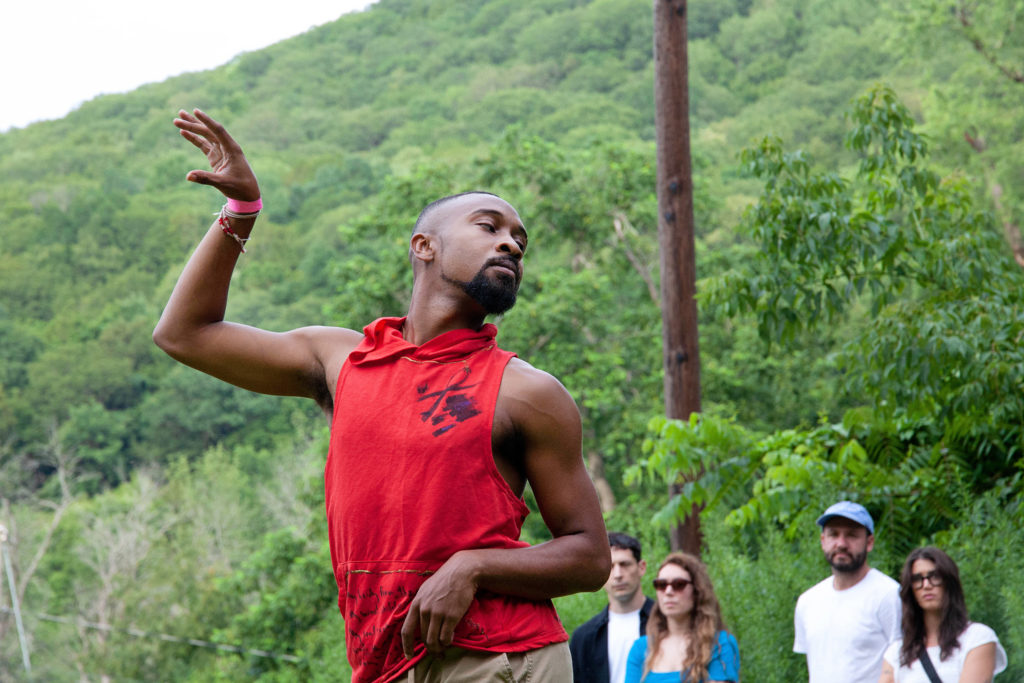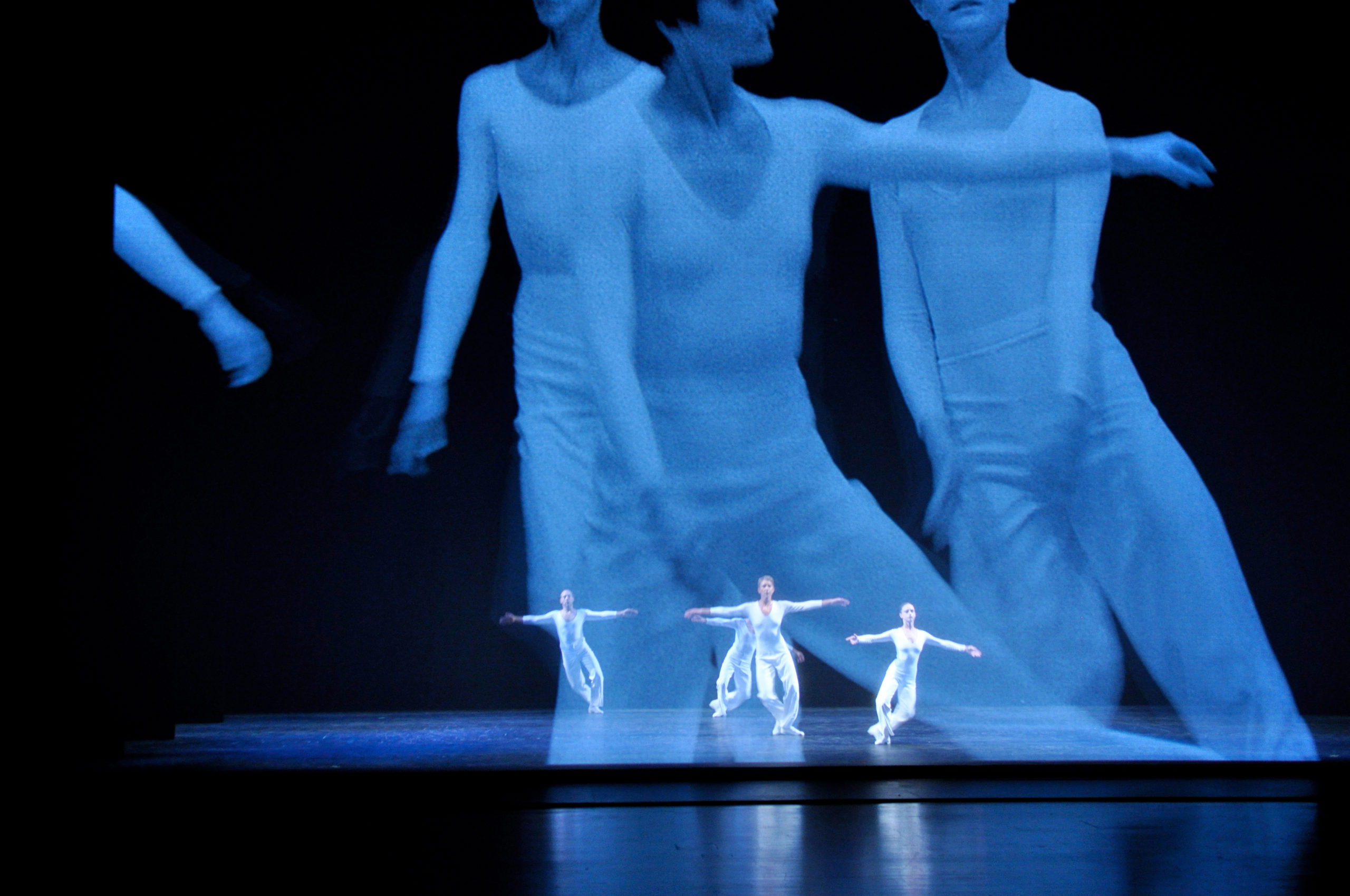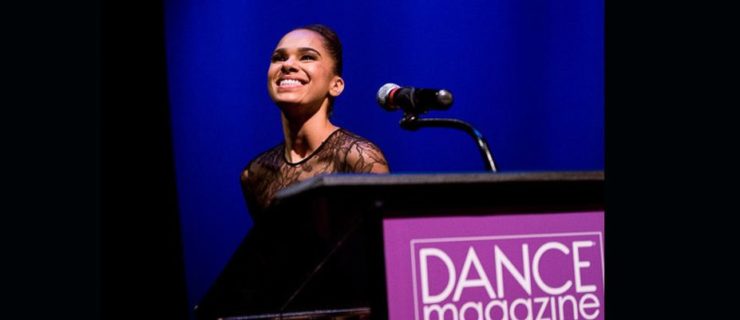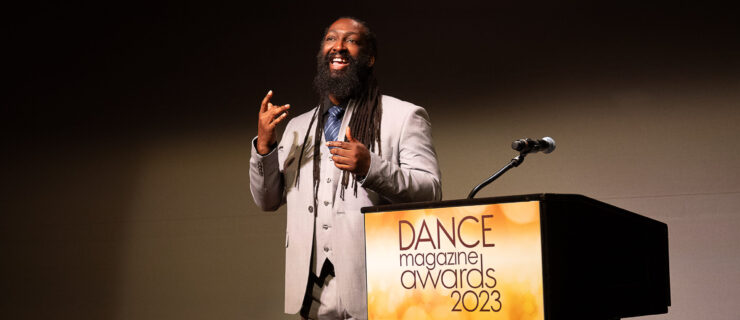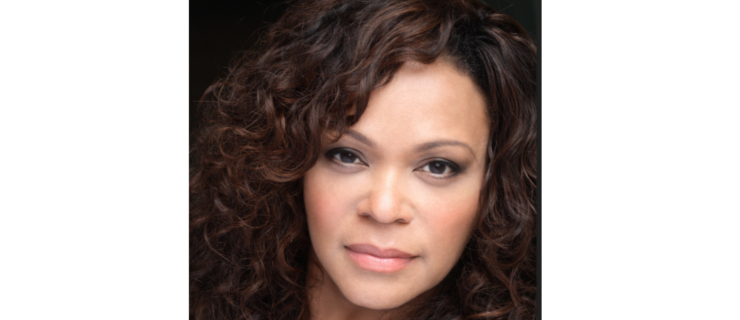Honoring Legends in Dance at the 2022 Dance Magazine Awards
The dancers, choreographers and scholars that make up this remarkable group of 2022 Dance Magazine Award honorees are notable not only for their artistry but also for their impact on the field of dance and the world at large. We’ll honor them at a celebration that will benefit the Harkness Promise Awards at Chelsea Factory in New York City on Monday, December 5. Join us for an evening of performances and presentations for each honoree. Find tickets at dancemediafoundation.org.
Kyle Abraham
It’s hard to throw around a phrase like “voice of a generation” without feeling hyperbolic. Yet it comes to mind when thinking about Kyle Abraham. No matter whether he’s tackling old-fashioned topics like love or bringing a contemporary take to issues like identity and community, this 45-year-old choreographer captures something exceptionally current in his work. Moments of all-out hustle might dissolve into soft introspection or a sexy, badass strut as he seamlessly sews together movement from the studio and the street, confirming the legitimacy of artistry from both sources. What might stand out most is how poignantly he uses the body to portray vulnerability—the vulnerability of forced machismo, of being Black in America, of life today.
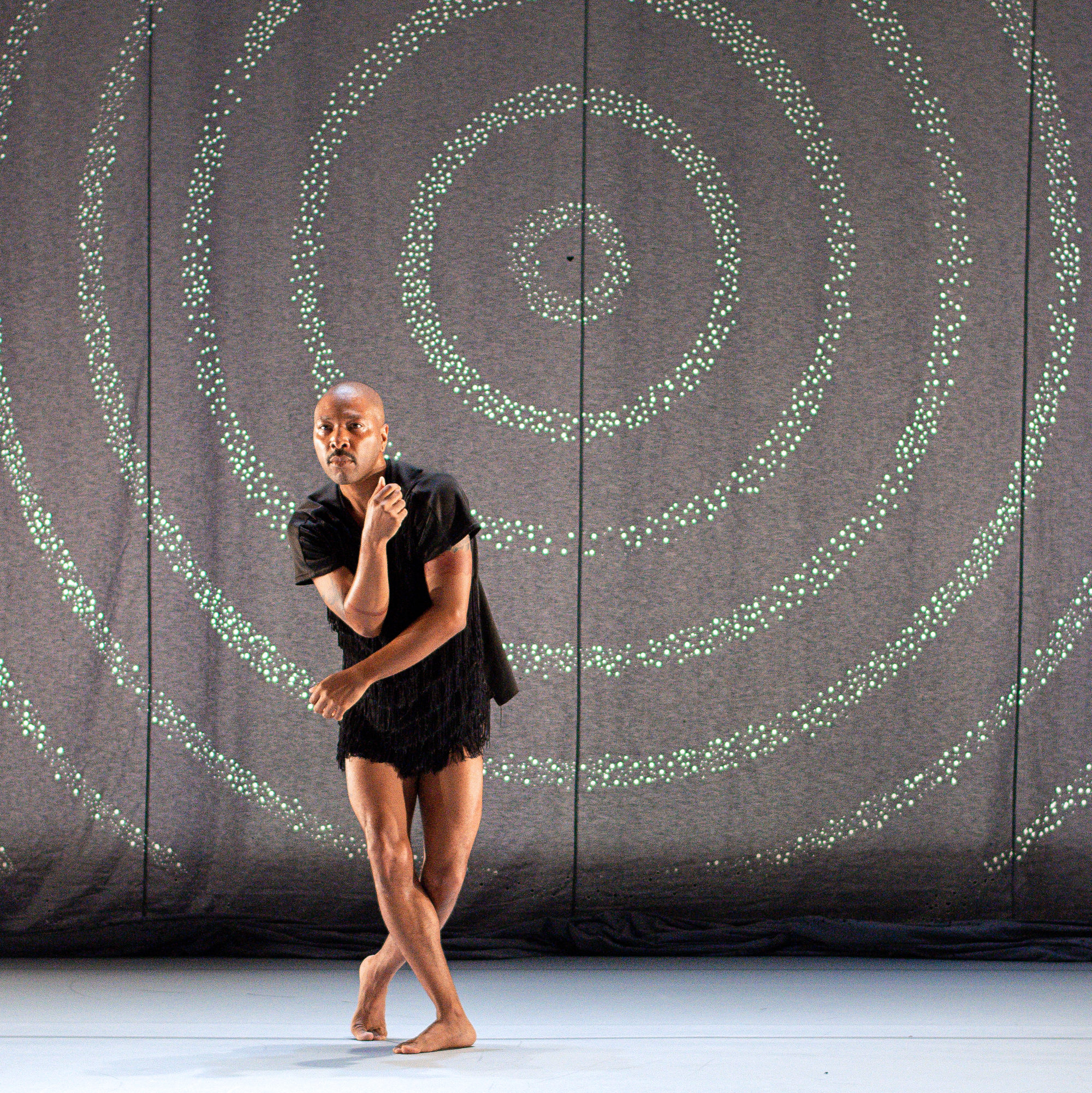
Abraham first became a talk-about with Inventing Pookie Jenkins, a hip-hop–inflected solo he performed decked out in a romantic tutu at New York City Center’s 2007 Fall for Dance festival. Once he formed his own company, now called A.I.M by Kyle Abraham (an abbreviation of the former name, Abraham.In.Motion), he made a splash with 2010’s Bessie Award–winning The Radio Show, looking at the loss of communication and his father’s Alzheimer’s through the lens of the closing of Pittsburgh’s only hip-hop radio station. A couple years later, Pavement, inspired by the movie Boyz n the Hood and W.E.B. Du Bois’ The Souls of Black Folk, cemented his reputation as a true original. More awards and raves steadily followed. Commissions from ballet star Wendy Whelan and others led to a series of creations for New York City Ballet, starting with the jaw-dropping The Runaway, bringing Pookie Jenkins’ swagger to Balanchine’s house with hauntingly beautiful solos for principal Taylor Stanley in particular. It’s no surprise that top companies like Alvin Ailey American Dance Theater, The Royal Ballet, Hubbard Street Dance Chicago and others have all clamored for their own Abraham premieres.
Meanwhile, he continues to create moving pieces for his company while investing in more than just his personal choreography. Many of the dancers who’ve worked with Abraham at A.I.M are proving to be fresh, nuanced dancemakers on their own—so much so that last summer, a festival at Lincoln Center titled “Reunions” consisted entirely of choreography by talented A.I.M alumni, like Kayla Farrish and Rena Butler. Not just an icon, but an inspiration and mentor, Abraham is paying it forward to fill this generation with several strong voices, and making the dance field richer for it.
—Jennifer Heimlich
Lucinda Childs
The name Lucinda Childs brings to mind elegance, precision and complexity born from simplicity: a crystalline minimalism so focused yet free, it approaches the spiritual. Think of her work, and you might envision the plain yet exalted figures of Dance, her landmark 1979 collaboration with Philip Glass and Sol LeWitt, inexorably gliding and turning across the stage and the scrim in front of it; or the stark celestial beings of her 1983 Available Light, guarding the tiers of Frank Gehry’s towering set with their quietly exacting steps.
From her experiments in the 1960s as a founding member of Judson Dance Theater to her current creations and restagings of past works, Childs has indelibly shaped the course of modern and postmodern dance, her influence continuing to ripple out across genres and generations.
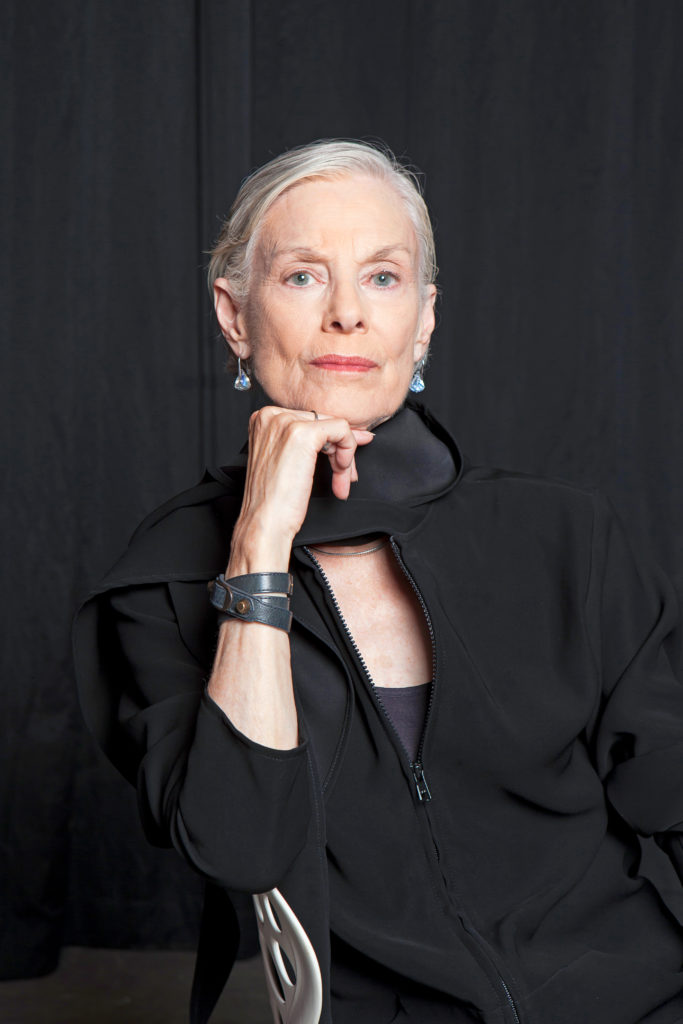
Childs, who grew up in New York City, studied modern dance with Hanya Holm and Helen Tamiris, then at Sarah Lawrence College and the Merce Cunningham Studio. As a Judson renegade, she put everyday objects to absurdist use, perhaps most memorably in her 1964 solo Carnation, in which she wore a colander as a hat, adorned with hair curlers, and fashioned kitchen sponges into a kind of beak. Recalling the work in Patrick Bensard’s 2006 documentary, Lucinda Childs, her fellow Judsonite Yvonne Rainer said, “The power of that solo was that this completely glamorous persona was doing these ludicrous things.”
In her work of the 1970s, documented in the invaluable online resource “A Steady Pulse” (from the Pew Center for Arts & Heritage), Childs turned her attention to geometry and repetition, often deploying a spare ballet vocabulary in silence. She reunited with music as the choreographer of the 1976 opera Einstein on the Beach, directed by Robert Wilson and composed by Glass, in which she also performed. Of her mathematical sensibility, the dance scholar Sally Banes, in Terpsichore in Sneakers, observed: “Repetition and shifting contexts make a world of detail come alive, as the act of dancing provokes a conscious act of seeing.”
With an avid European following, Childs holds the rank of Commandeur in France’s Ordre des Arts et des Lettres and received the Venice Biennale’s Golden Lion award in 2017. Look around, and you’ll see traces of her aesthetic everywhere, from the work of Anne Teresa De Keersmaeker and Sarah Michelson—modern dance titans in their own right—to younger artists just starting out. In recent revivals at the Museum of Modern Art and The Joyce Theater, her older works have kept revealing new layers of brilliance.
—Siobhan Burke
Herman Cornejo
What more is there to say about Herman Cornejo? It seems that every superlative has been used when it comes to this dancer. It is hard to think of another male dancer, or another dancer period, who is so universally lauded and admired. “His jump is like something out of a Warner Bros. cartoon,” Joan Acocella wrote about him in The New Yorker in 2004. “His speed is altogether abnormal….But what is most remarkable about him is clarity.” And it’s all true.
Cornejo has been a principal dancer with American Ballet Theatre since 2003. Next year will be his 24th with the company, where he has now danced more or less every leading role in the classical canon. He is also a favorite of choreographers, from Martha Clarke and Twyla Tharp to Alexei Ratmansky, Mark Morris and Wayne McGregor. He is as at ease in fast, teasing roles, like Puck in The Dream, as he is when called upon to suffer, as in Manon; he can do cabrioles with a wink and a smile as Basilio in Don Quixote or be noble and touching as Prince Siegfried in Swan Lake.
It’s easy to forget that Cornejo had to fight for these roles. There was a time when, according to ballet’s rather confining ideas about type, he was considered too short to embody them convincingly. Like Baryshnikov before him, he convinced the higher-ups and the audience otherwise. The minute he stepped into the role of Count Albrecht in Giselle, everyone could plainly see he belonged there. Because, in addition to possessing dance chops, Cornejo projects charisma, charm, intensity and intelligence. “I see him as a hero,” Tharp once said of him, “something that’s out of vogue these days.”
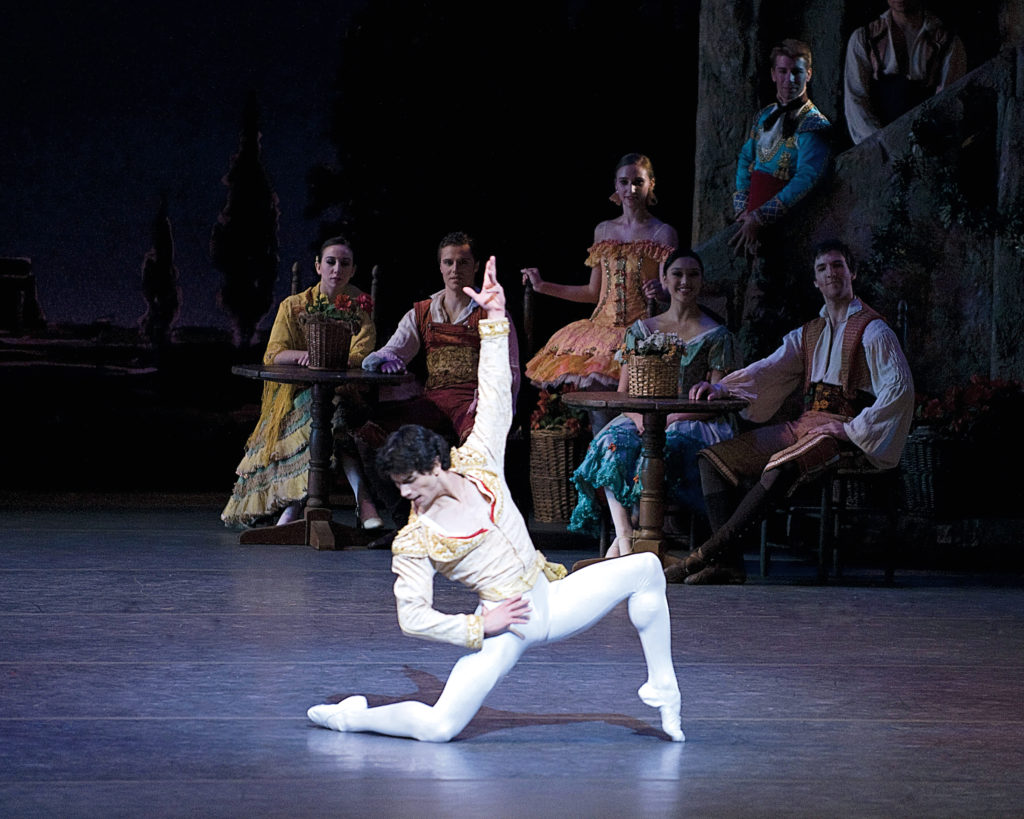
Tharp is right. There is something timeless about Cornejo’s approach to dance. Even before he began training in his native Argentina at age 8, his mother would wake him at 4 in the morning so they could drop his sister Erica off in time for her own classes at Teatro Colón. He became a professional dancer at 14. From that very young age, he took his profession, and his gift, very seriously, and worked extremely hard at it. At 16, he won the gold medal at the International Ballet Competition in Moscow—the youngest winner in the contest’s history.
And perhaps because of this discipline and grit, learned at such a young age, his dancing has an honesty and purity of intention that still ring through every step he takes in the studio and on the stage. He’s a prince, through and through.
—Marina Harss
Brenda Dixon-Gottschild
A scholar, performer, choreographer and anti-racist cultural worker, Brenda Dixon-Gottschild holds a PhD in performance studies from New York University, is professor emerita at Temple University and is a writer for Dance Magazine, composing features on a range of topics, like “Decolonizing Flamenco Through Exploring Black Influences” and “The Power of Dance as Political Protest.” Throughout her nearly 50-year career as an author and cultural warrior, her writings, lectures, artistic presentations and intellectual charm have reminded us that we too have a responsibility to activate our activism, ebbing and flowing as we embrace Black movement influences. Her critical performance essays and post-performance reflexive dialogues serve as survival tactics with healing functions for readers, existing as glorious disruptors in both academic and concert spaces.
By expanding the discourse on values in dance, two of her seminal texts, Digging the Africanist Presence in American Performance: Dance and Other Contexts and The Black Dancing Body: A Geography From Coon to Cool, encourage some readers to embrace parts of themselves they may have been taught to hate. She’s a winner of multiple awards, including the Congress on Research in Dance Award for Outstanding Leadership in Dance Research (2008), and awards and fellowships from the Pew Center for Arts & Heritage. Her research blossoms from a kind of radical resistance and remembrance, as she archives her explorations with her powerful voice, body and pen. Dixon-Gottschild coined the phrase “choreography for the page,” using her writings and her dances to express and question essential truths. Her choreographic works are often in collaboration with her husband, dancer/choreographer Hellmut Gottschild, with whom she has created and performed Stick it Out (1993), Frogs (1996) and Tongue Smell Color (2000).
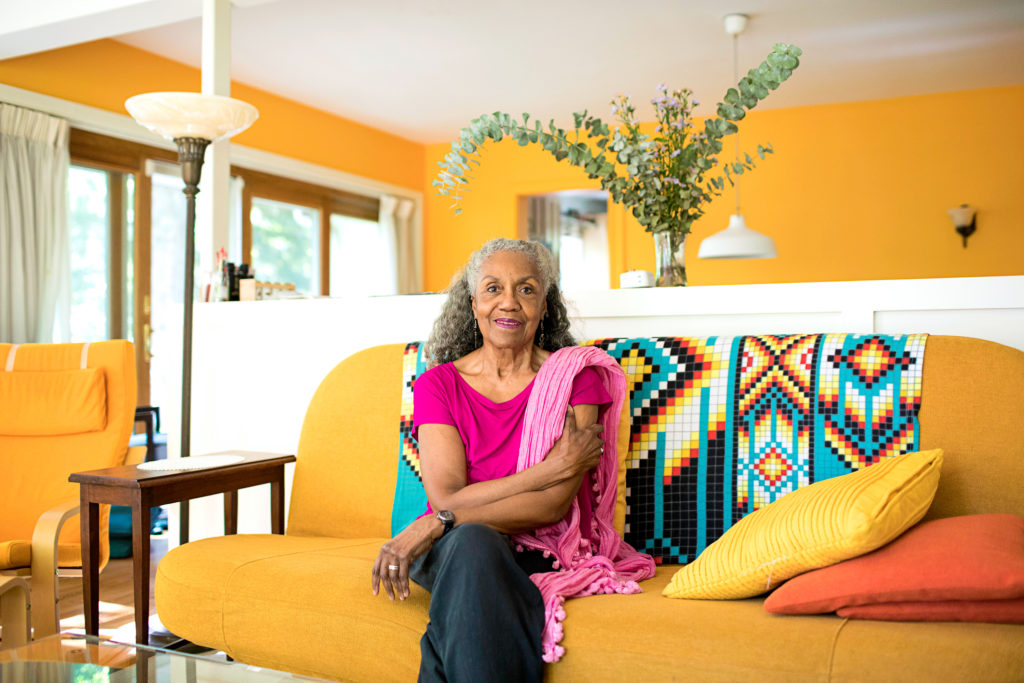
A fundamental facet of Dixon-Gottschild’s brilliance is her advocacy. She empowers her audiences to legitimize their ownness…their uniqueness and, for many of us, our Blackness. Dixon-Gottschild’s tactical teachings exist at the intersection of her artistic influence and historical knowledge, thereby offering a rubric for reading, contextualizing, understanding and celebrating dance that is not necessarily Eurocentric.
Engaging with the scholarship of Dixon-Gottschild warrants reflection on larger social constructs of race and gender. Her body of work reminds us that while some of us may be vulnerable to the work that burdens us, the histories our bodies hold can also free us from that burden. Dixon-Gottschild’s work continues to be the beating heart of many emerging Black scholars’ research, as they navigate all spaces, reveling in their Blackness and understanding that their Black feet, Black butts and Black skin are symbols of unapologetic beauty, bliss and brilliance.
—Gregory King
Dianne McIntyre
This year, Dianne McIntyre celebrates the 50th anniversary of Sounds in Motion, the company she founded and directed from 1972 to 1988, and its premiere concert. McIntyre started dancing at age 4 with teacher Elaine Gibbs, and by 7 she was choreographing on neighborhood kids in her first production, presented at a local library in her hometown of Cleveland. At 25, with New York City as her dance home, her company’s debut at the Cubiculo Theatre made it official. For 16 years, McIntyre’s deep understanding that dance and music must coexist was passed on to the gifted dancers and musicians of her company. After closing the company and its school, she began making and performing works as an independent choreographer.
McIntyre’s performances, choreography, collaborations and teachings are insightful, and invariably raise the consciousness about Black people’s stories. Watching her dance and create these stories are lessons in enlightenment. McIntyre’s body is its own instrument, and one can “hear” the sounds as they are realized. She can shepherd musicians to match or follow her arms as they sweep the air, her toes as they test the floor, the swirling, spinning and tilting of her torso and the sprinkling of the imagined through her fluttering fingers. Some memorable solo performances, choreography or collaborations are: If You Don’t Know, as part of “FLY: Five First Ladies of Dance” by 651 ARTS, with McIntyre, Germaine Acogny, Carmen de Lavallade, Bebe Miller and Jawole Willa Jo Zollar; we carry our homes within us which enables us to fly, as part of New York Live Arts’ music series; and myriad choreo-poems alongside her longtime friend, the late Ntozake Shange. McIntyre choreographed Change for Dance Theatre of Harlem, Porgy and Bess for the English National Opera, and the films Beloved and Miss Evers’ Boys, to name a few.
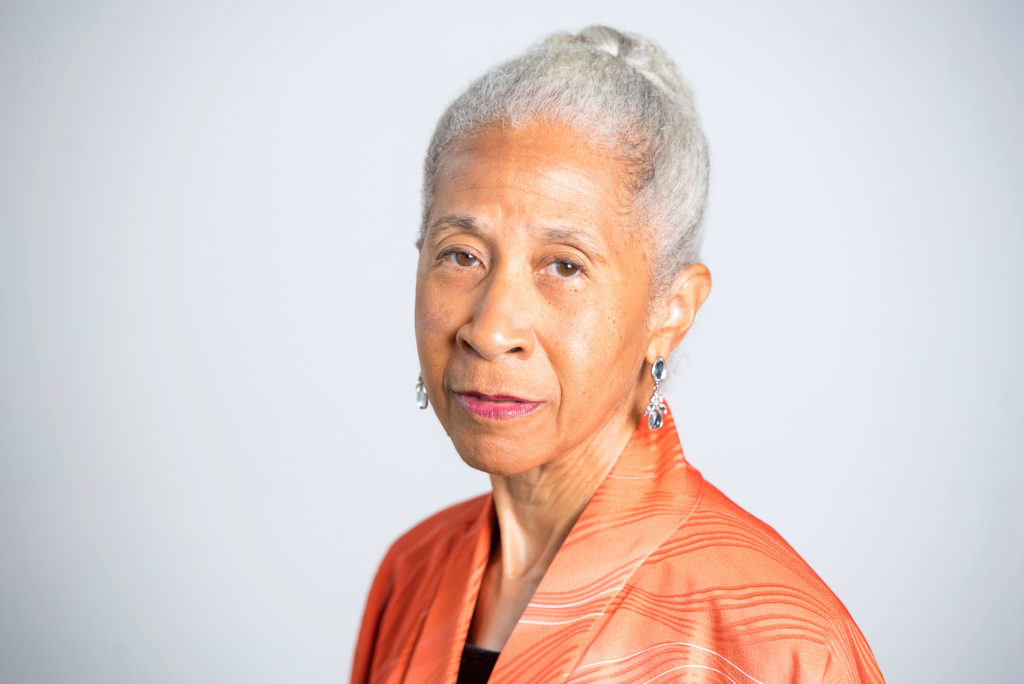
There is not a single descriptor that is Dianne McIntyre. But we know that over these 50 years she cultivated the careers of many dancers, including Zollar, Marlies Yearby, Bernadine Jennings and Carole Anne “Aziza” Reid, all of whom were integral parts of Sounds in Motion before assuming leadership roles in dance, social consciousness and service. McIntyre is as effervescent in an impromptu phone call as she is cogent when planning an upcoming event. She has been honored with a Teer Pioneer Award and an American Dance Festival Award; and by Dance/USA, the Doris Duke Charitable Foundation, Harlem Arts Alliance, and the Bessies; and has received an Emmy nomination, and fellowships from John S. Guggenheim Foundation and the National Endowment for the Arts, among others. It’s a long time coming, but now as a capstone for her 50 years of creating and giving, Dianne McIntyre is rightfully being honored by Dance Magazine.
—Charmaine Warren
The Chairman’s Award: Jim Herbert
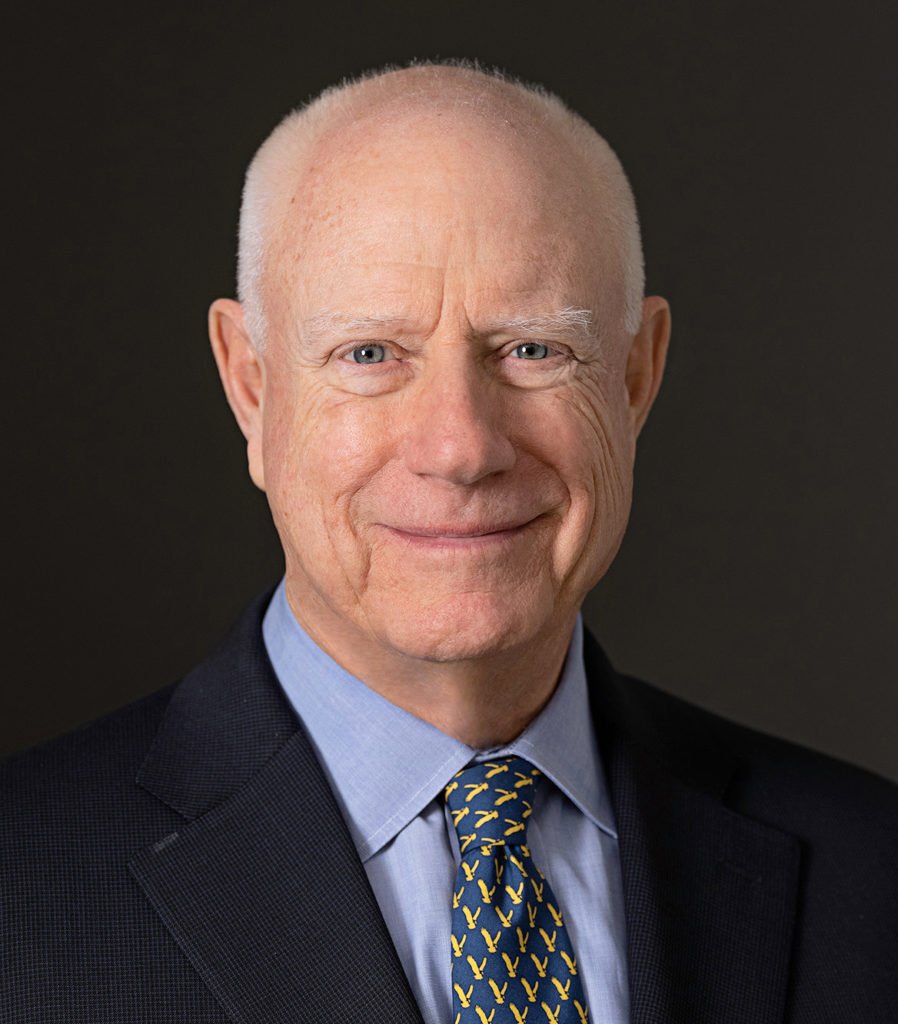
A Chairman’s Award, chosen by Dance Media CEO Frederic M. Seegal to honor distinctive movers and shakers behind the scenes, will go to Jim Herbert, the founder and executive chairman of First Republic Bank. A longtime supporter of dance, Herbert is the founder of Chelsea Factory, as well as a board member with Lincoln Center for the Performing Arts and San Francisco Ballet.
Harkness Promise Awards
Funded by net proceeds from the Dance Magazine Awards ceremony, the Harkness Promise Awards offer a $5,000 grant and 40 hours of rehearsal space for innovative young choreographers. This year’s awardees are Kayla Farrish and Johnnie Cruise Mercer.
Kayla Farrish is a New York City–based dancer, choreographer, director and photographer. “My work questions a range in human and societal experiences,” says Farrish, founder of Kayla Farrish/Decent Structures Arts. “As an African American woman from the South, with no records beyond American soil and inquiring identity, I [create] in order to see myself.” She recently collaborated with Brandon Coleman on the duet Broken Record and with Melanie Charles on Roster, co-directed a film with Charles, choreographed for Saul Williams’ Motherboard Suites, and created the dance theater feature-length film Martyr’s Fiction. Farrish is currently a rehearsal director at Sleep No More in New York City and an adjunct faculty member at New York University’s Tisch School of the Arts.
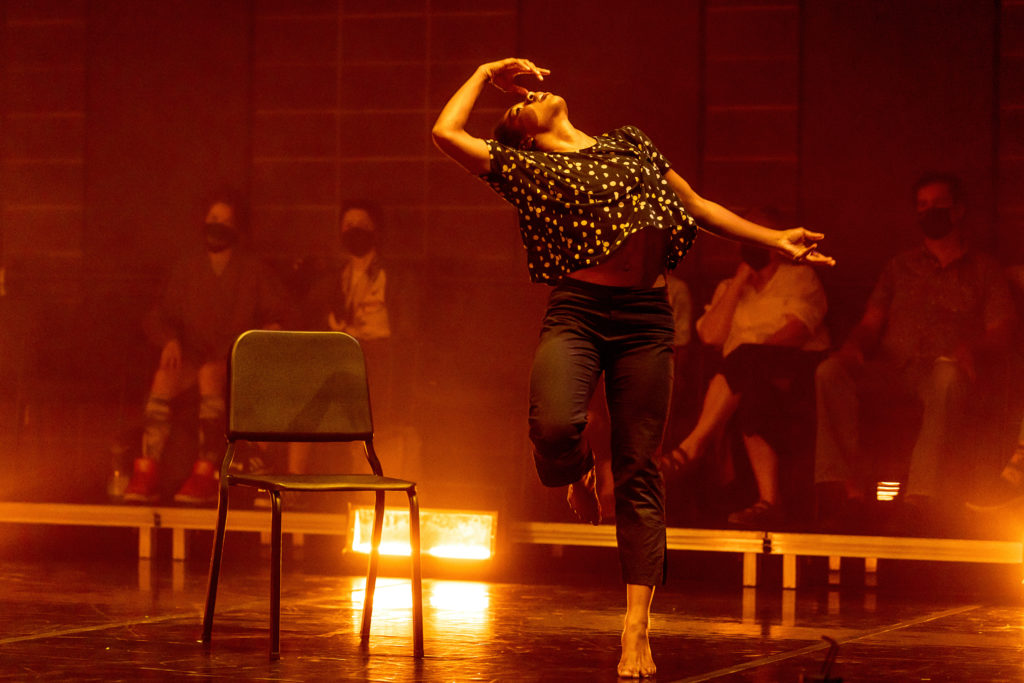
Johnnie Cruise Mercer is a queer, Black choreographer, educator, impresario and social entrepreneur based in New York City. “Led by my curiosity for embodied philosophy, my work takes action as movement responses, practices that support and acknowledge history, memory and space,” says Mercer. He works within the New York Public School system through The Leadership Program, a mentorship-based organization that uses art to cultivate leadership qualities, and is the founding producer and company director of TheRedProject/NYC. “To me, making is about embracing reality, listening, releasing and preparing for a communal, metaphysical, revolution.”
